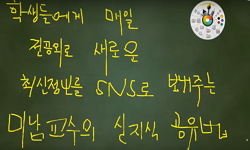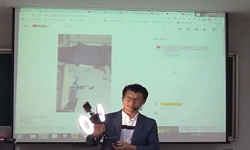When the negative event is published, the company tends to go through the negative impact on the firm performance. Especially, with the SNS, the negative event is instantly spread on indefinite region so the impact seems bigger than the period before ...
http://chineseinput.net/에서 pinyin(병음)방식으로 중국어를 변환할 수 있습니다.
변환된 중국어를 복사하여 사용하시면 됩니다.
- 中文 을 입력하시려면 zhongwen을 입력하시고 space를누르시면됩니다.
- 北京 을 입력하시려면 beijing을 입력하시고 space를 누르시면 됩니다.

SNS Effect of the negative event on the Firm Performance: Comparison between Pre and Post SNS media appearance
한글로보기https://www.riss.kr/link?id=A104606719
- 저자
- 발행기관
- 학술지명
- 권호사항
-
발행연도
2014
-
작성언어
English
-
주제어
SNS ; Event Study ; CAR Analysis ; WOM ; Negative event ; Firm Performance ; Food ; Health ; Trust
-
등재정보
KCI등재
-
자료형태
학술저널
- 발행기관 URL
-
수록면
21-33(13쪽)
-
KCI 피인용횟수
1
- 제공처
- 소장기관
-
0
상세조회 -
0
다운로드
부가정보
다국어 초록 (Multilingual Abstract)
When the negative event is published, the company tends to go through the negative impact on the firm performance. Especially, with the SNS, the negative event is instantly spread on indefinite region so the impact seems bigger than the period before the SNS media appearance. It seems that everyone considers the SNS media impact on the firm performance quite big. However, there has been no empirical study on the impact comparison on the firm performance between pre and post SNS media occurrence periods. This study tries to empirically compare the impact of the negative event on the firm performance between pre and post SNS media appearance. Our study starts from the basic but not verified question; Does really the negative event have more negative impact in the post-SNS-occurrence period than in the pre-SNS-occurrence period?In order to examine the impact of the negative publicity on firm performance in two eras, pre and post SNS media appearance, we used CAR (Cumulative Abnormal Resturns) model. By using this model, we could verify the statistical significance of cumulative abnormal returns in market between before and after the events. For event samples, we focused on food manufacturers and collected the negative events from 1991 to 2003 for pre-SNS occurrence period, and from 2010 to 2013 for post- SNS occurrence period. Based on the listed food companies at KOSPI, we researched Naver News Library (newslibrary.naver.com) and Naver News (news.naver.com) for all the individual negative events published for both periods. Firm returns data were collected from TS 2000 (KOCO Info) and market portfolio data were collected from KRX Exchange.
Through our empirical analysis, our finding is interesting to note that the type of events differently influences on the firm performance. With the SNS, the health-related events have influence on the firm performance ‘after the event day’ whereas the company behavior trust events have influence ‘before the event day’. Our findings have implications for management. When a negative event directly related to or threatening customers or their life such as health, it is crucial to fix up the situation right after the event occurs. On the other hand, when a negative event is not publicly available information such as company behavior trust, it is important for marketers to strengthen the firms’ trust reputation and control the bad WOM before the event.
참고문헌 (Reference)
1 김일석, "뉴미디어 시대의 바이럴 광고에 대한 고찰" 한국정보디자인학회 16 (16): 71-80, 2013
2 이원흠, "내부상품거래 공시기업의 주가반응과 기업특성에 관한 실증연구" 한국재무관리학회 30 (30): 75-100, 2013
3 Karlíček, Miroslav, "Word-of-Mouth Marketing: An Integrated Model" 2010
4 Walker, Chip, "Word of Mouth: Targeting Advice Givers can Unlock the Power of Positive Gossip for Your Business" 17 : 38-, 1995
5 Liu, Yong, "Word of Mouth for Movies: Its Dynamics and Impact on Box Office Revenue" 74-89, 2006
6 Chevalier, Judith A., "The effect of word of mouth on sales:"
7 Ivković, Zoran, "The Timing and Value of Forecast and Recommendation Revisions" 73 (73): 433-463, 2004
8 Stenger, Thomas, "Social Network Sites (SNS): Do they Match? Definitions and Methods for Social Sciences and Marketing Research" 2009
9 Cameron, Sam, "On the Role of Critics in the Culture Industry" 19 (19): 321-331, 1995
10 Campbell, John Y., "Lo, and A. Craig Mackinlay, 1997, the Econometrics of Financial Markets"
1 김일석, "뉴미디어 시대의 바이럴 광고에 대한 고찰" 한국정보디자인학회 16 (16): 71-80, 2013
2 이원흠, "내부상품거래 공시기업의 주가반응과 기업특성에 관한 실증연구" 한국재무관리학회 30 (30): 75-100, 2013
3 Karlíček, Miroslav, "Word-of-Mouth Marketing: An Integrated Model" 2010
4 Walker, Chip, "Word of Mouth: Targeting Advice Givers can Unlock the Power of Positive Gossip for Your Business" 17 : 38-, 1995
5 Liu, Yong, "Word of Mouth for Movies: Its Dynamics and Impact on Box Office Revenue" 74-89, 2006
6 Chevalier, Judith A., "The effect of word of mouth on sales:"
7 Ivković, Zoran, "The Timing and Value of Forecast and Recommendation Revisions" 73 (73): 433-463, 2004
8 Stenger, Thomas, "Social Network Sites (SNS): Do they Match? Definitions and Methods for Social Sciences and Marketing Research" 2009
9 Cameron, Sam, "On the Role of Critics in the Culture Industry" 19 (19): 321-331, 1995
10 Campbell, John Y., "Lo, and A. Craig Mackinlay, 1997, the Econometrics of Financial Markets"
11 "Korea Restaurant Information"
12 Kim Yoonsuk, "Interaction between Public Relations and Stock Price" Korea University Media Department 2008
13 Basuroy, Suman, "How Critical are Critical Reviews? the Box Office Effects of Film Critics, Star Power, and Budgets" 103-117, 2003
14 Vogel, Harold L., "Entertainment Industry Economics: A Guide for Financial Analysis" Cambridge University Press 2001
15 Lee Tae Hee, "Effects of Corporate Identity Program on the Profit Performance of the Firm" 2 (2): 68-78, 2000
16 Horsky, Dan, "Does it Pay to Change Your Company's Name? A Stock Market Perspective" 6 (6): 320-335, 1987
17 Lee, Dongwon, "Does Online Social Network Contribute to WOM Effect on Product Sales?" 2012
18 Womack, Kent L., "Do Brokerage Analysts' Recommendations have Investment Value?" 51 (51): 137-167, 1996
19 Luo, Xueming, "Customer Satisfaction, Analyst Stock Recommendations, and Firm Value" 47 (47): 1041-1058, 2010
20 Austin, Bruce, "Critics’ and Consumers’ Evaluations of Motion Pictures: A Longitudinal Test of the Taste Culture and Elitist Hypotheses" 10 (10): 156-167, 1983
21 "Business Week, July 10 (2000)"
22 Oh Seung Seok, "A Study on the Uses and Gratifications of Twitter and Facebook" Hanyang University Journalism 2010
동일학술지(권/호) 다른 논문
-
The Impacts of Changes in Brand Attributes on Financial Market Valuation of Korean Firms
- Korean Marketing Association
- Lee, Hee Tae
- 2014
- KCI등재
-
- 한국마케팅학회
- 송태호
- 2014
- KCI등재
-
Bullsone Inc.: Becoming Leader Brand through Fast-Second and Spill-over Strategy
- Korean Marketing Association
- Hong, Sung Tai
- 2014
- KCI등재
-
Facebook Users in United Arab Emirates: Underlying the Factors and Demographic Analysis
- 한국마케팅학회
- Somkiat Mansumitrchai
- 2014
- KCI등재
분석정보
인용정보 인용지수 설명보기
학술지 이력
| 연월일 | 이력구분 | 이력상세 | 등재구분 |
|---|---|---|---|
| 2027 | 평가예정 | 재인증평가 신청대상 (재인증) | |
| 2021-01-01 | 평가 | 등재학술지 유지 (재인증) |  |
| 2019-05-10 | 학회명변경 | 영문명 : 미등록 -> Korean Marketing Association |  |
| 2018-01-01 | 평가 | 등재학술지 유지 (등재유지) |  |
| 2015-01-01 | 평가 | 등재학술지 유지 (등재유지) |  |
| 2013-05-14 | 학술지명변경 | 외국어명 : Asian Journal of Marketing -> Asia Marketing Journal |  |
| 2012-02-22 | 학술지명변경 | 한글명 : 한국마케팅저널 -> 아시아마케팅저널외국어명 : Korean Journal of Marketing -> Asian Journal of Marketing |  |
| 2011-01-01 | 평가 | 등재학술지 유지 (등재유지) |  |
| 2009-01-01 | 평가 | 등재학술지 유지 (등재유지) |  |
| 2006-01-01 | 평가 | 등재학술지 선정 (등재후보2차) |  |
| 2005-01-01 | 평가 | 등재후보 1차 PASS (등재후보1차) |  |
| 2004-01-01 | 평가 | 등재후보학술지 유지 (등재후보1차) |  |
| 2003-01-01 | 평가 | 등재후보학술지 선정 (신규평가) |  |
학술지 인용정보
| 기준연도 | WOS-KCI 통합IF(2년) | KCIF(2년) | KCIF(3년) |
|---|---|---|---|
| 2016 | 0.1 | 0.1 | 0.14 |
| KCIF(4년) | KCIF(5년) | 중심성지수(3년) | 즉시성지수 |
| 0.45 | 0.67 | 0.318 | 0 |




 ScienceON
ScienceON DBpia
DBpia







